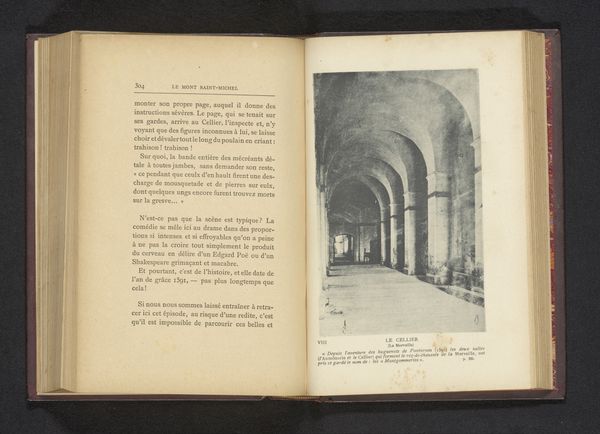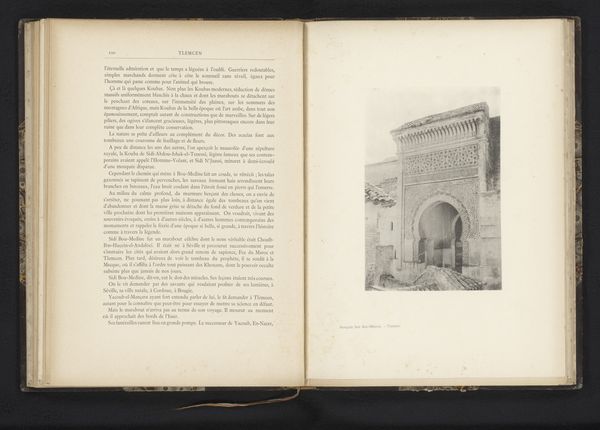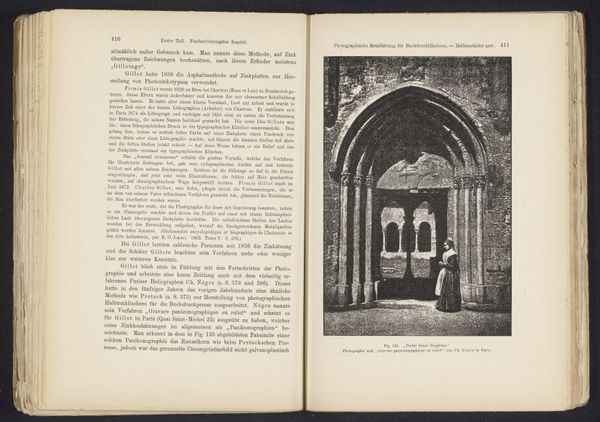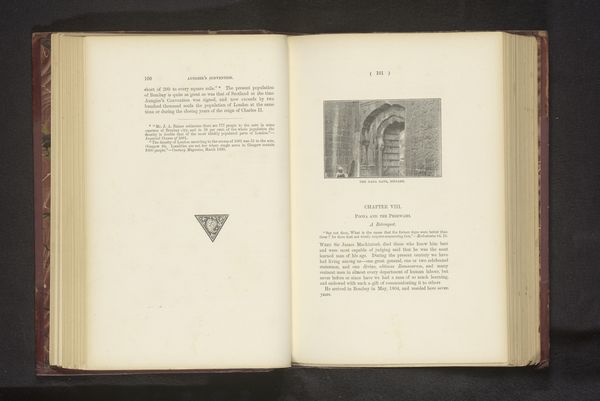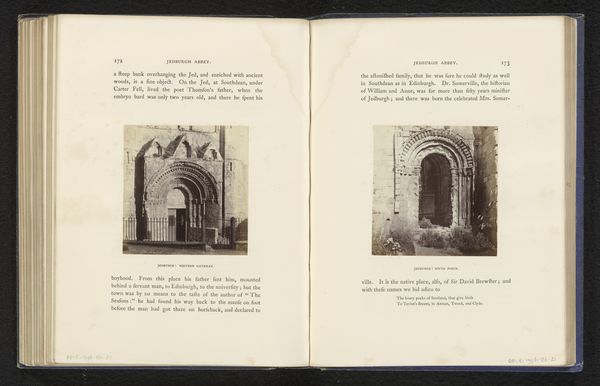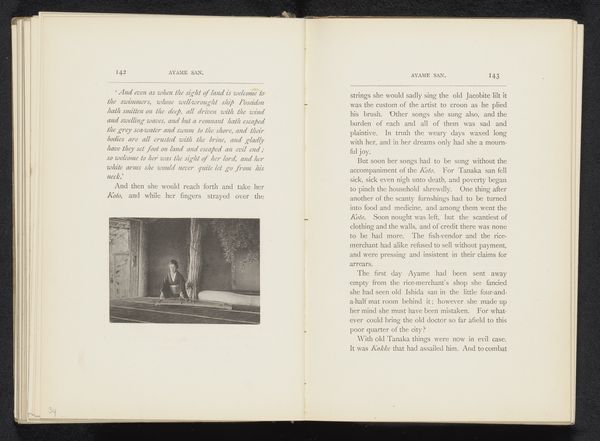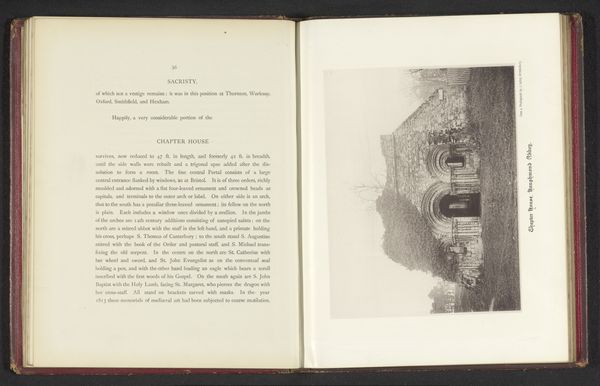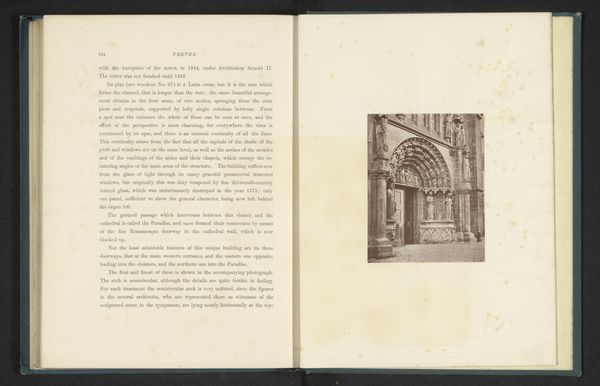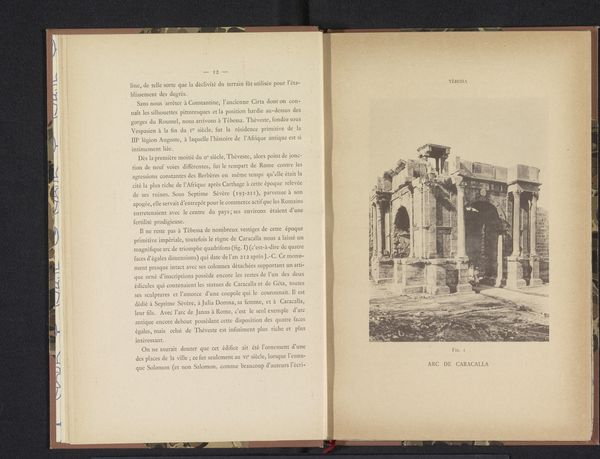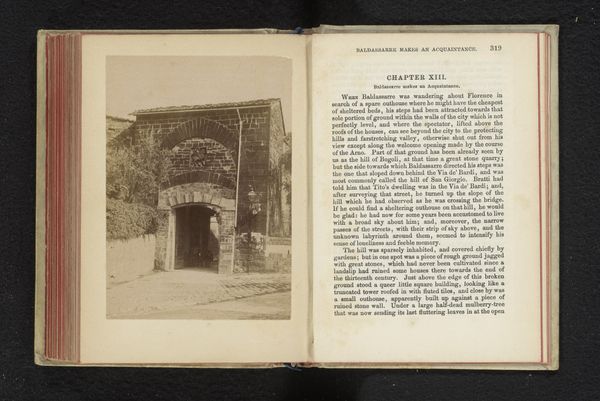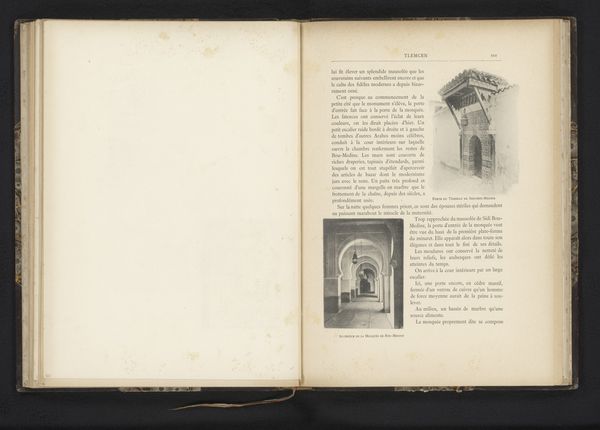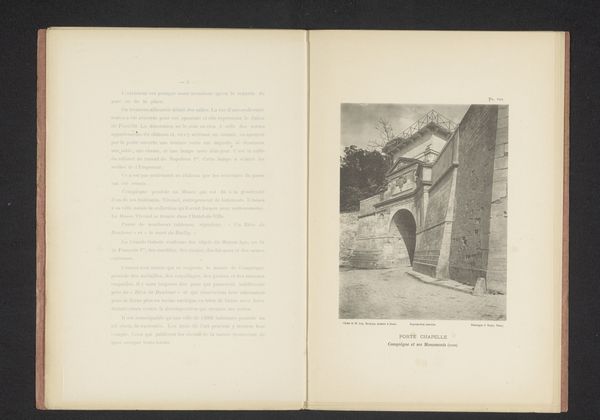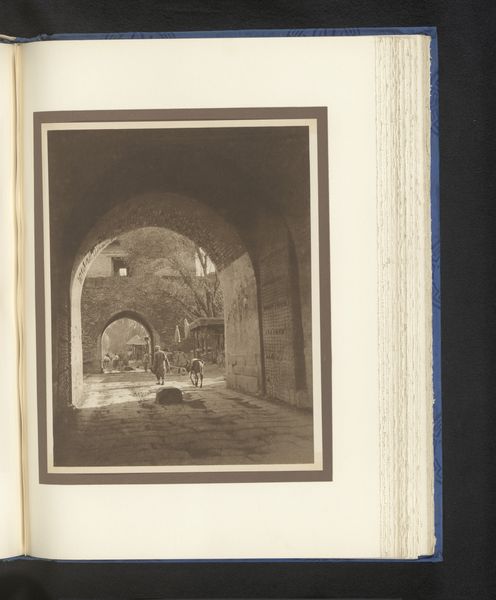
print, photography
#
aged paper
#
medieval
#
paperlike
# print
#
book
#
sketch book
#
hardpaper
#
personal journal design
#
photography
#
personal sketchbook
#
journal
#
thick font
#
cityscape
#
handwritten font
#
historical font
Dimensions: height 166 mm, width 104 mm
Copyright: Rijks Museum: Open Domain
Curator: We're looking at a print of an open book, its pages displaying an image titled “Gezicht op de trappen van de abdij te Mont Saint-Michel,” which translates to “View of the stairs of the abbey at Mont Saint-Michel.” This dates to before 1897 and is attributed to Ernest Goethals. Editor: The photograph depicts a severe and unwavering ascending gaze. There are heavy grays and structured steps which evoke themes of laborious journeys, class division, and spiritual conquest. The architecture of the port fortifié is unyielding, projecting a sense of austere isolation and solemn reverence. Curator: Formally, consider the sharp contrast created by the strong light filtering through the archway, the artist captured textures in great detail—each stone, each step has a palpable, tactile quality rendered in grayscale. The composition leads your eye directly up the winding staircase, utilizing strong diagonal lines. The aged paper adds to its nostalgic essence. Editor: Indeed, the starkness mirrors Mont Saint-Michel’s conflicted history. Situated near the northern coast of France, the location symbolizes the religious conquest and subsequent suppression that defined much of French history. A visual document of social stratification. Curator: I see it more as Goethals using the architectural forms—the archway, the steps, the receding perspective—to create a visual harmony. He focuses less on the sociopolitical ramifications of the fortress, or of pilgrimage routes as mechanisms of power and more on the structural balance and gradations in tone. The varying widths of each stone articulate an echoing resonance, creating the impression of continuous architectural mirroring within this composition. Editor: But aren't we missing something if we ignore how even Goethals' vantage point could imply a power dynamic? He seems to look upward, at the beckoning stone. He perhaps does not notice the unyielding demands of the church upon his view, reflecting its monolithic grip. We might think about what those stairs have meant to so many people, as a space and expression of suffering. Curator: I understand that perspective, of course, but for me it’s also an objective view rendered in very pleasing values. Each shadow delineates form, defining architectural structure against ambient light and giving the illustration volume and resonance. It stands well on its own visual terms. Editor: For me, this piece serves as a powerful testament to human endurance through art and a poignant reflection on our ever-evolving cultural relationship with spiritual space and built environments. Curator: I'd suggest the image conveys a sense of formal visual perfection and geometric solidity, qualities as true and lasting as the physical space that is illustrated, that it might call for pilgrimage or worship, so long as an artist bears witness to its timelessness.
Comments
No comments
Be the first to comment and join the conversation on the ultimate creative platform.
